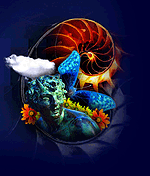The Artistry and Tradition of Tennyson's Battle Poetry
J. Timothy Lovelace
Routledge
187 pages
ISBN number: 0-415-967763-5
Reviewer: Jeffrey C. Alfier
"Tennyson, it seems, was always a great child.
So should I have been, but for Beaumont Hamel."
--Wilfred Owen
J. Timothy Lovelace is an independent scholar who received his doctorate from the University of North Carolina in 1999. His present work constitutes volume twenty-eight in Routledge’s Studies in Major Literary Authors. Wrought from 283 literary sources, this dissertation-turned-book is characterized by scholarly depth. Lovelace’s subject, Tennyson, Alfred, Lord, or Alfred Tennyson (1809-1892), took his place alongside Algernon Charles Swinburne (1837-1909) as one of the greatest literary figures of the Victorian Age, and one of our most enduring poets. He was not simply prolific; he was brilliant: by the age of fifteen he had written several plays, and later would become one of the most stylistically and thematically intricate poets in English history. Yet, his poetic heirs expressed conflicting views of him. Although today he is roundly praised in critical literature, to Auden he was “the stupidest of English poets," while it took decades for T.S. Eliot to warm up to him.
Notwithstanding, Lovelace’s chapters outline at length several key areas: Tennyson and the heroic tradition; his early war poetry; his treatment of battles-- historical and legendary; and his concern with contemporary conflicts such as the Crimean War-- the source of his famous "Charge of the Light Brigade," and the Spanish revolt against Ferdinand VII. Also included are Lovelace’s explications of "Maud," a poem evoking Homer’s Iliad in which Tennyson “sings of the psychic devastation of his own wrathful hero" (119), and "Idylls of the King," an Arthurian cyclic poem where “the classical themes of Tennyson’s battle poems attain their culmination in a work of epic scope and greatness" (137).
Though many may think of Tennyson as a fire-eating glorifier of war, historiographical soundness demands we consider him a man of his age: his war poetry of the 1850s was comparable to what his American contemporaries wrote between 1830 and 1865. One must also note that he lived long before the chasmal killing fields of the First World War changed battle poetry forever. The balanced perspective Lovelace teaches is that “The subject of Tennyson’s battle poetry is not warfare per se, but heroism" (15). As he strongly underscores, heroism for Tennyson had a fundamental tragic edge that prospered amidst undeterred loyalty, adding that Tennyson’s “more typical Homeric objective is not to instigate but to commemorate," as in his poem, "Ode on the Death of the Duke of Wellington" (96). Moreover, Tennyson was not a drawing room effete unfamiliar with the kind of grief experienced by those who lost loved ones in war. He underwent near emotional devastation when close friend Arthur Hallam died suddenly, an event that gave birth to Tennyson’s greatest elegy, "In Memoriam." Throughout his battle poems, we find a unifying factor in that “in authoring them Tennyson fully realized the bardic ideal. He inspired real warriors…In some cases his countrymen verified his claim that the song that nerves the nation’s heart is itself a deed" (85).
Still, Tennyson situated his vision of Anglo heroics in terms of a heady Parnassian glory that presumed to coincide with external realities, and his traducing Britain for what he believed was a lethargically indulgent society anticipated the patriotic and often outright militaristic verse of 1914-1918 (which helps to explain Wilfred Owen’s comment above). During those war years his poem, "Mariana," gave a certain civic impetus to women on the home front. Tennyson himself believed he had a moral duty to hearten his countrymen. Yet, under any circumstance, Tennyson can be isolated or decontextualized for political purposes as easily as any poet of the past. In the wider arena, Tennyson must be interpreted as a complex man in a vertiginous age, and Lovelace describes him quite succinctly as a man who “offers a vision conducive to the affirmation of life in this tough world" (117).
Students of Tennyson and critical literature will welcome The Artistry and Tradition of Tennyson’s Battle Poetry to the fold of broader studies on Tennyson, such as Leonee Ormond’s Alfred Tennyson: A Literary Life (St. Martin’s, 1993), and Herbert Tucker’s Critical Essays on Alfred Lord Tennyson (GK Hall, 1993). Although a doctoral dissertation, this book is not a heavy or dry tome, and is suitable for any serious Tennyson beginner who has had at least an introduction to the poet. Lovelace’s writing is limpid and free of the intrusive rhetoric often found in literary studies of this nature. However, noting the cost of the book will cause many to balk at its purchase. The most dedicated may either faint, or simply ponder thievery. The clear-headed may use inter-library loan.
|
|


